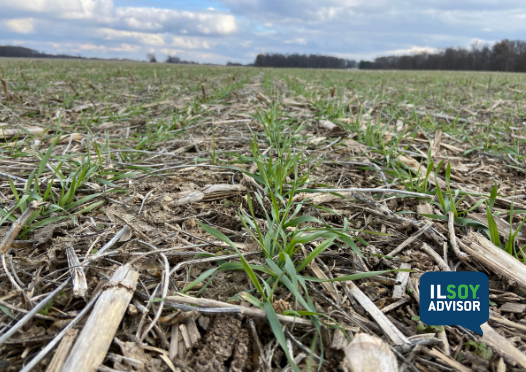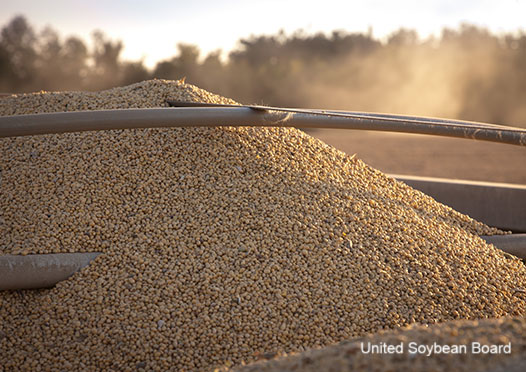ILSOYADVISOR POST
Evidence, Data and Farmer Decision Making
This article was originally published on farmdoc Daily by Micah Pope and Steve Sonka.
Throughout much of agriculture’s history, farmers had to make decisions based only upon observation and recollection. Both sources are not precise, but it was the best evidence available. As scientific methods were introduced, farmers could employ research-based recommendations to improve production efficiency. Progress followed, even though the recommendations had to be general in nature (apply 1.2 pounds of nitrogen per bushel of expected corn yield). This applied research and outreach provided better evidence to support farmer decision making.
Digital technologies are again changing the farmer decision toolkit, enabling much more specific evidence to be collected which can inform, and be informed by, rigorous research. The evolution of those capabilities is exciting and offers potential benefits for farmers and the food supply chain. We recently participated in a study[1] where farmers, agriculture technology providers and researchers shared insights regarding that evolution. An evolution which is in its early days and where private and public actors have important and emerging roles. Collaboration likely would aid in achieving the full potential from these technology advances.
Farmers’ Long-term Desire for Evidence from Their Own Operations
Steve Sonka grew up on a dairy farm in Iowa. “In the barn, the linkage between what could be measured and our ability to improve performance was straightforward. In those days, we had to carry the milk pail from the cow to the milk can and it was easy to know which cows produced more milk. Since there were only about 15 cows, it also was possible to remember the high producing cows and give them an extra portion of grain. Similarly, when a cow’s production declined neared the end of her lactation, that cow would receive a smaller portion of grain.”
It has been reported to us that, in the past, some farmers used a similar practice to compare corn varieties. Using the distance between telephone poles as a proxy for land area and planting varieties to line up with those poles, the farmer would observe the amount of grain in the combine bin to gain insights as to the productivity of individual varieties.
The important point of these examples is that farmers have long desired to link measures of outcomes and management actions in farming. However, the economics of measurement (the cost of measurement versus the benefits of doing so), given the available technology, limited farmers’ ability to routinely capture and exploit data. Today’s digital technologies dramatically alter those economics, enabling capture of unprecedented amounts of relatively high-quality data at low cost.
Insights from Current Farmers
Our recent interviews with farmers actively engaged in implementing precision and digital agriculture technologies indicate considerable anticipation and experimentation regarding on-farm data. While enthusiastic about the potential, a healthy skepticism also exists. That skepticism is fueled both by lack of experience and the shifting set of opportunities available. The following statements illustrate the expectations for on-farm data to enhance farmer decisions:
- “Technology enables more on-farm trials with less hassles.”
- “Trials provide evidence for seed populations, fertilizer and other inputs and can drive our cost/returns decision matrix.”
- “With analytics, you can do more whole field research instead of only at the plot level.”
- “Technology can be used to drive on-farm research, such as testing variety performance in real time.”
- “On-farm data can assist in understanding the impacts of rainfall events on various fields.”
- “With two or three years of good information, we can cull cash-rented tracts that are not adequately performing.”
While the current levels of technology and analysis are promising, farmers tend to see today’s status as more of a transition than an end. This perspective is illustrated by the following sentiment: “While more and more information is available to me, much of that information doesn’t directly support the specific decisions I need to make.”
An Evolving Range of Capabilities
The productivity of American agriculture has fueled economic and societal benefits. One of its key features has been effective linkage of research institutions and technology developers with farm decision makers. As scientific advances from Land Grant universities and the USDA became available, agents of the Cooperative Extension service delivered recommendations to farmers. Over the last century, the private sector assumed a greater role in that process, both in terms of conducting research and engaging with farmers directly as information providers.
While successful given yesterday’s technology, advances in the on-farm application of digital technology provide new means for engagement. These advances have fueled development of exciting new ways to link data from farm operations with more effective decision making. Our discussions with farmers, agriculture technology providers, and university researchers identified numerous specific initiatives that are in process and more are envisioned. To provide further clarity, we have identified four typologies of engagement which can augment the traditional extension system. These four are depicted in the graphic below and briefly described in the following paragraphs. Examples for each of these typologies are summarized in the report noted earlier.

Digital Outreach: On-farm trials are conducted by farmers on farmer-participant plots, using externally designed protocols (in collaboration with external researchers). Data is collected by the farmer, with analysis done at the collaborating university, cooperative or firm. Individual and group results are provided to participants, with aggregated results available for more broad distribution through digital platforms.
Farmer Focus: Research is driven primarily by the interests of groups of farmers, with collaborating entities providing the resources for research design, implementation and analysis. Consistent on-farm trials are conducted on multiple farms. Local farmer peer groups are engaged to identify high priority research issues and to compare locally aggregated results.
Data Driven: Focused at the field or farm level (rather than the research plot), data are generated and captured in the normal course of farm operations. Traditional research protocols are not a primary driving force, so scientific replication is not prioritized. Instead, analysis is informed by data from many farming operations with the goal of assessing crop productivity, identifying best management practices and advancing farm profitability.
Farmer Designed: The individual farmer defines specific productivity issues and questions that are applicable to their individual operations. Employing sophisticated communication capabilities, these interests are then transformed into research designs that can be employed at the plot or field level. Those designs can then be transmitted directly to farm equipment to be implemented within normal field operations. Analysis done at the collaborating institution is then communicated to the farm cooperator.
It should be noted that all four types could be and, in some cases, are offered by private firms, cooperatives and/or university extension. An attractive feature of this dynamic setting is that farmers can exploit the framework that best meets their current managerial approach. While choice can be a source of uncertainty, it also allows for experimentation and learning both by farmers and by information/service providers.
Moving Forward
Being able to link decisions and resulting on-farm performance has long been a management capability that farmers desire. Current and future advances in digital technology offer to fulfill that ambition, although today there is considerable uncertainty as to the path that will evolve. As with numerous instances in agriculture, effective public/private collaboration could facilitate more efficient movement to that future.
Note
[1] A report titled “Use of On-Farm Digital Technologies” details the results of the study. The study was funded by the United Soybean Board and conducted by Centrec Consulting Group, LLC.





Comments
Add new comment